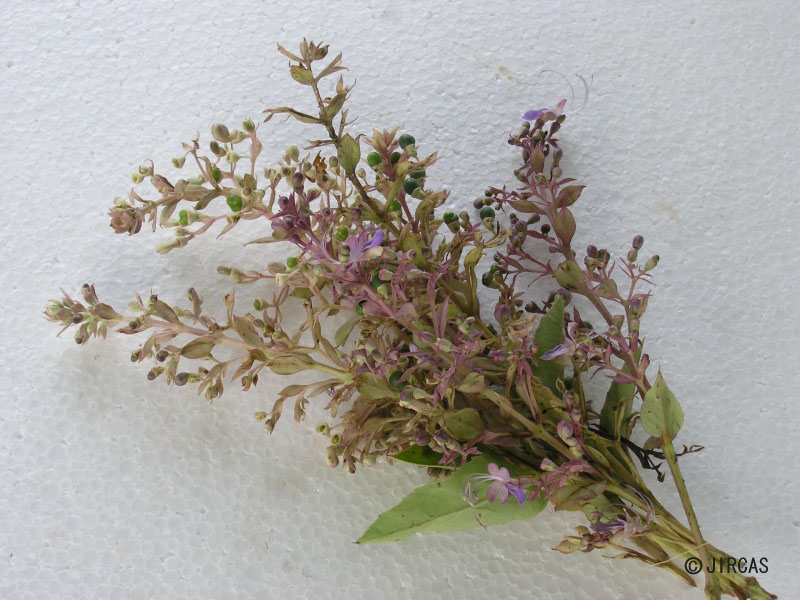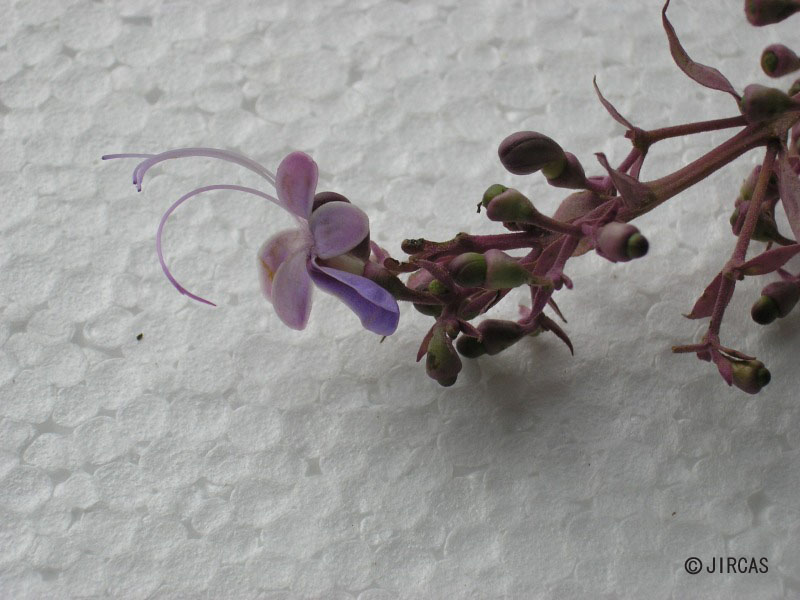Clerodendrum serratum (L.) Moon var. wallichii C. B. Clarke (Lamiaceae)
- Scientific name
- Clerodendrum serratum (L.) Moon var. wallichii C. B. Clarke
- Family name
- Lamiaceae (Syn. Labiatae)
- Local name
- Akkhi thawan, charak pa
Shrub or treelet, up to 4 m tall. Stems relatively stout, mostly unbranched, nodes not annulate. Leaves simple, opposite, elliptical to obovate, 7–22 × 3–8 cm, base acute to subcuneate, apex acute or short acuminate, margin serrate, glabrous on both surfaces; petiole 0.3–1.2 cm long. Inflorescence axillary cymes, 3–5 cm long, or terminal panicles of racemes, 6–45 cm long. Calyx campanulate, tube 4–7 mm long, deeply dentate to truncate. Corolla zygomorphic, tube swollen, 5–9 cm long, posterior lobes c. 9 mm long, usually dark blue, lateral lobes usually pale blue, lower lobe deflexed, c. 1.5 cm long, dark purple or dark violet, showy, not fragrant. Stamens long, exserted, blue; fruiting calyx somewhat accrescent. Fruit a drupe, subglobose or broadly obovoid, 6–9 mm long, glossy green, turning dark purple or black, not splitting.
Commonly found in grasslands, thickets, and secondary forests at altitudes from sea level to 1700 m a.s.l. Occasionally grown as an ornamental. Propagated by seed sowing or softwood cutting.
Inflorescences are eaten boiled or cooked in curries.
Inflorescences are eaten boiled or cooked in curries.





